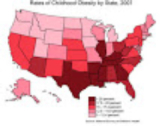 4 ways you can help alleviate the problem
4 ways you can help alleviate the problem
While most Americans will worry about eating too much this holiday season, 16 million of our country’s children live in households that struggle to afford food, according to a 2012 report from the United States Department of Agriculture.
“We hear about ‘food insecurity’ quite a bit, especially after the 2008-09 economic crash, but I think most people don’t have a clear picture of what that means,” says Lois Brandt, a former Peace Corps volunteer and author of “Maddi’s Fridge,” (www.MaddisFridge.com), a children’s picture book that asks the question: what do you do if your best friend’s family doesn’t have enough food?
“Food insecurity means an empty refrigerator. Food insecurity means soda instead of milk. Food insecurity means a child coming to school hungry and unable to focus. Poverty may not look exactly the same in our country as it does in a war-torn region or a developing country, but it is affecting our children and their futures. Sometimes, working parents have to choose between rent and food, medicine and food, or gas and food.
Brandt suggests four things you can do to help prevent childhood hunger.
• Support nonprofit organizations like Feeding America (www.FeedingAmerica.org).
Previously known as Second Harvest, Feeding America is a national network of food banks that feeds more that 37 million people through food pantries, soup kitchens and shelters. It’s the nation’s leading organization for countering hunger and educating the public about this crisis.
“Public awareness is important,” Brandt says. “Many people simply do not know that we’re surrounded every day by hungry children.”
• Talk to your children about childhood hunger and how they can help.
“When I was a child I opened my best friend’s refrigerator to get a snack and was shocked to see it held almost nothing,” she says. “I didn’t know what to do.”
As an adult, Brandt says she’s amazed by the number of people who share with her their own stories of childhood food insecurity.
“Rather than sheltering your children from this sad fact of American life, talking to them about it can help nurture their compassion and empathy,” she says. “And there’s plenty they can do to help, from making posters to raise awareness, to organizing a food drive at school.”
Taking action teaches children that they do have the power and ability to change the world for the better.
• Don’t make childhood hunger a political issue.
Of course, childhood hunger doesn’t exist in a vacuum; issues like welfare, minimum wage, income inequality and access to health care – all of which are heavily politicized – surround the problem. Whatever your take on these topics, realize that no matter the decisions a parent has made in his or her lifetime, children are innocent and have no control of their family’s circumstances.
• Volunteer with your family at a shelter or food pantry during the busy holiday season.
While serving or cooking food for a holiday-themed meal at a shelter during Thanksgiving or Christmas does not solve the larger problem, it will affect every person whose life you touch that day. Your efforts and kind words can become a fond, lifelong memory for a child, or remind adults that others care and they’re not alone.
Volunteering also has personal benefits, not the least of which is knowing that, despite whatever problems you’re facing, you were able to help someone else.



